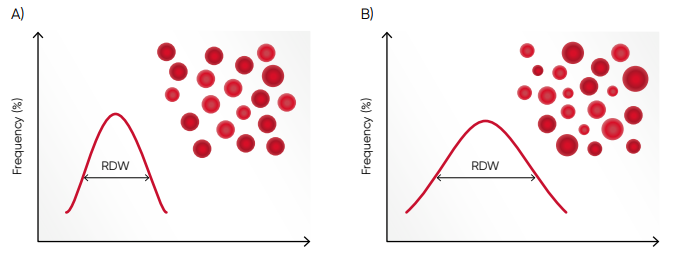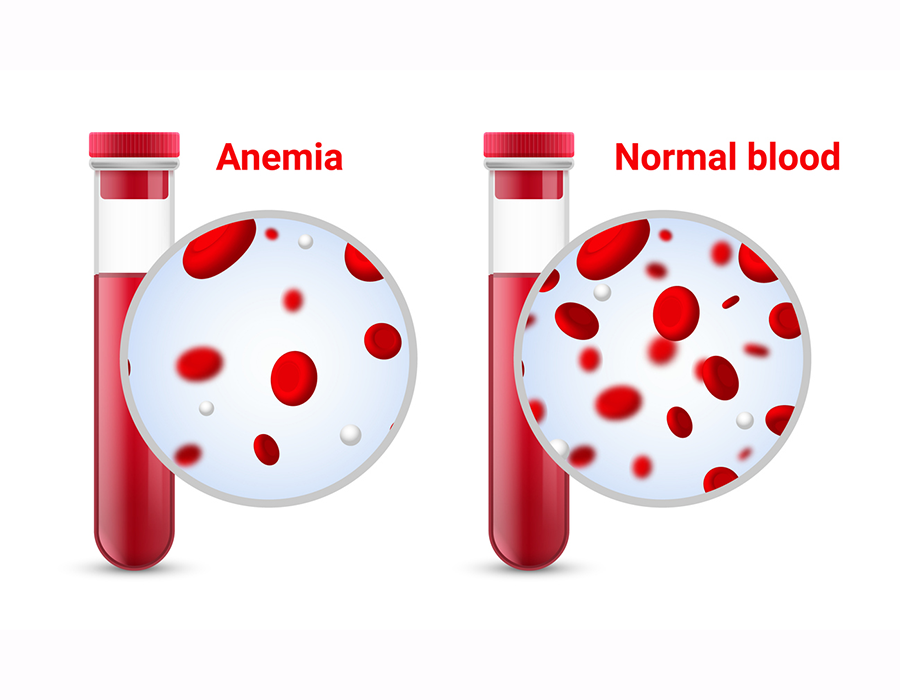Diagnosing iron deficiency anemia in females in reproductive age
Long-term blood loss due to menorrhagia is a common cause of iron deficiency anemia (IDA) in females in reproductive age. Distinction of IDA from other causes of microcytic anemias, such as beta-thalassemia, is important as each of these conditions may be treated differently. While IDA can be cured by simple iron supplementation, the most common treatment of moderate and severe thalassemia is blood transfusion (1, 2).
Cause of iron deficiency anemia
Hemoglobin consists of four subunits, each comprising one globulin polypeptide that helps keeping the HGB protein soluble and one heme group to which an iron atom is attached. Iron is an important component for the oxygen-carrying capacity of hemoglobin. Iron deficiency in menstrual women can occur in case of long-term blood loss without appropriate iron supplementation. When hemoglobin synthesis is defective due to iron deficiency, the red blood cells are unevenly small (microcytic), and an increased RBC distribution width (RDW) can be the first laboratory finding that indicates anemia (Fig 1). Iron deficiency is considered the most common cause of anemia and about 50% of anemia in women worldwide is caused by iron deficiency (1, 3).

Use of indices for diagnosis of iron deficiency anemia
Typically, several tests (e.g., peripheral blood smear, serum ferritin, transferrin saturation, serum iron, and total iron binding capacity) are requested to differentiate IDA from other microcytic anemias (4). However, many of these tests are not readily available or they are time-consuming (1). An automated hematology analyzer, on the other hand, is available in most laboratories worldwide, and a complete blood count can rapidly report a range of parameters that are useful in anemia investigations (1).
Abdulraheem and coworkers at the University of Garmiany in Iraq used Swelab Alfa Plus hematology analyzer to evaluate the reliability of various hematological discrimination indices (RBC count, Mentzer index, RDW index [RDWI], Srivastava index, Green and King index, and Ehsani index) to distinguish iron deficiency anemia from other causes of microcytic anemia in reproductive-age females (1). The researchers found the RBC count to be the most sensitive and RDWI to be the most specific index, whereas the Green and King index was shown to provide the highest values for correctly discriminating IDA from other causes of microcytic anemia in these women.
Learn more
Read more from the news article about the use of RBC indices in discriminating anemias.
References
- Abdulraheem et al. Most Reliable Haematological Indices for Diagnosis of Iron Deficiency Anaemia from Non-Iron Deficiency Anaemia in Reproductive-Age Females. Annales de Pathologie 5, 24-29 (2023).
- Thalassemia International Federation: Thalassaemia https://thalassaemia.org.cy/haemoglobin-disorders/thalassaemia/ (accessed 2024-02-13).
- World Health Organization: Anaemia https://www.who.int/data/nutrition/nlis/info/anaemia (accessed 2024-02-13).
- White paper: Clinical utility of red blood cell indices in anemia investigations. Boule Diagnostics, 45000, Edition 1 (2023).
